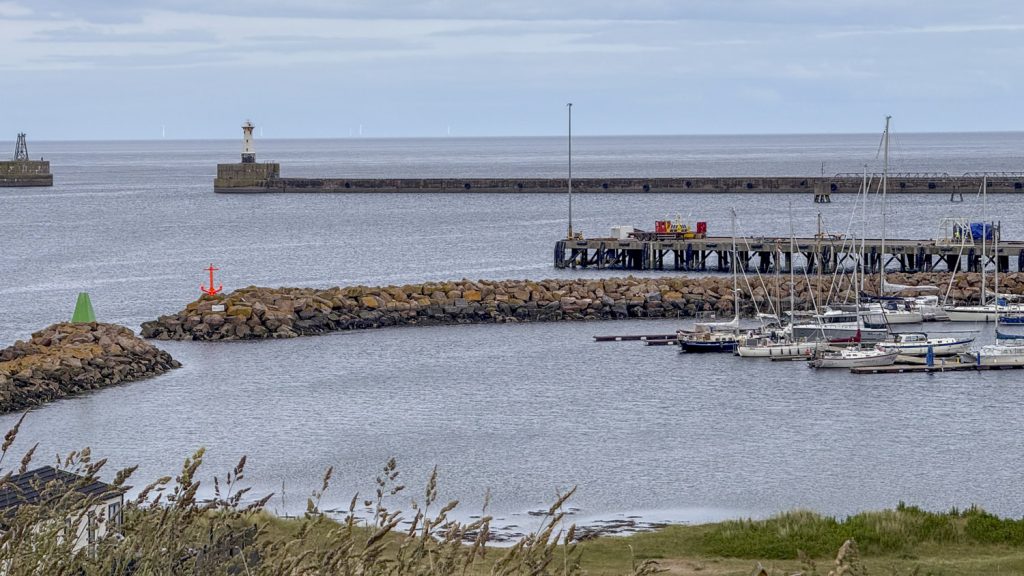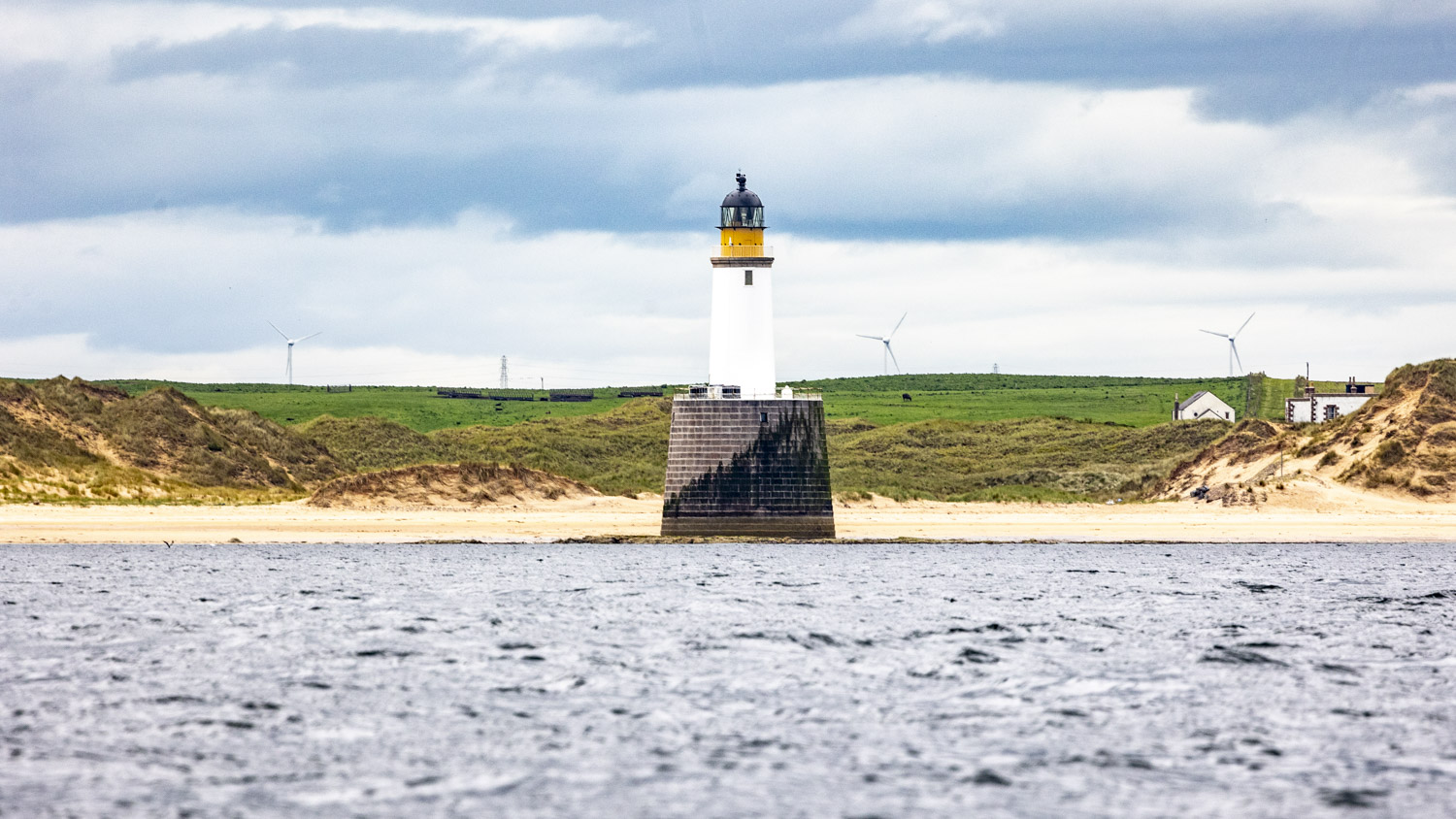Trilleen and I sailed from Wick for Peterhead, crossing the Moray Firth and negotiating the first of the many many wind farms on the east coast. I sailed late in the evening a long afternoon snooze and sailing into the night trying to catch the front of a tiny kink in the air stream which offered a push from the west, and hence a fast sail to Peterhead.
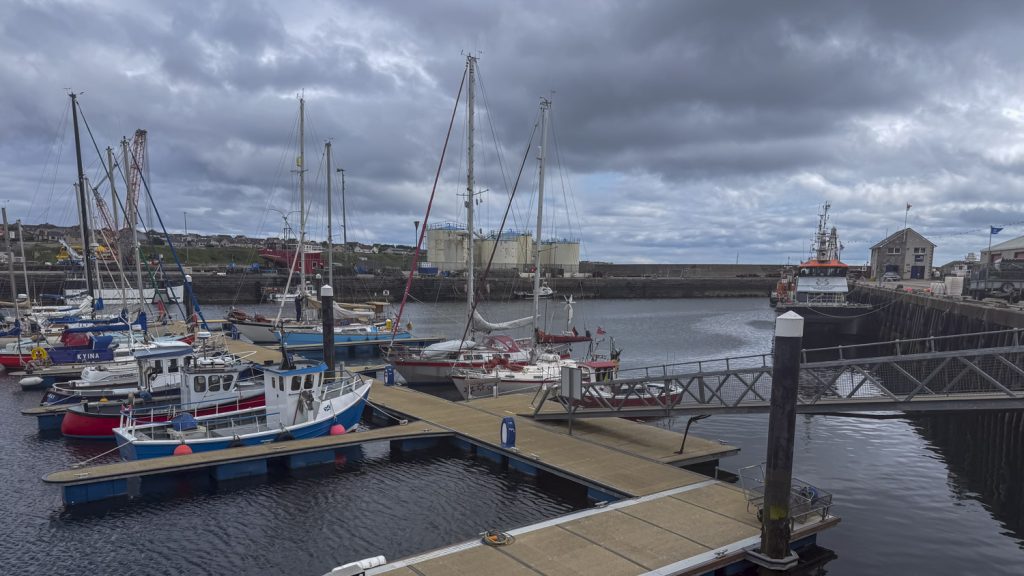
While in Wick I’d been really grateful for the engineering support from M&M Engineering who had come directly from Seawork in Southampton to have a look at my leaky engine. We pulled the engine back out into the cabin – an activity which is getting disturbingly routine, and managed to give all the case bolts their much needed tighten up after the run in period. It seems to have worked and the engine is no longer using oil at a scary rate.
The passage south began with skirting the north and east edges of the Beatrice / Moray East wind farms, creeping for many hours past the quiet moaning of the slowly turning turbines. These spectres of the new age of energy rear up out of the ocean, illuminated only by the horizon spanning slow synchronised flash of their warning beacons.
The support ship Esgavt Alba was lying to on the north east edge of the turbine field, still technically underway, but as still as if she were aground due to the miracle of her dynamic positioning system. She posed a pretty pickle for Trilleen as she was a) the give way vessel, and b) was very much in my way, but wasn’t showing any signs of doing, well anything, certainly not making the clear and unambiguous alteration of course demanded by the regulations. In the end we slipped past at three and half cables (0.35 of a nautical mile) which is a lot closer than I’d like.
It was only when I’d got past and clear that I was able to relax into anything like a passage routine, and it was a pretty poor excuse for a routine because over the next hours I reefed and unreefed the boat seven times as the wind pulsed and squalls blew through, and the wind vane needed constant attention to keep Trilleen on track in the swirling wind which followed each squall.
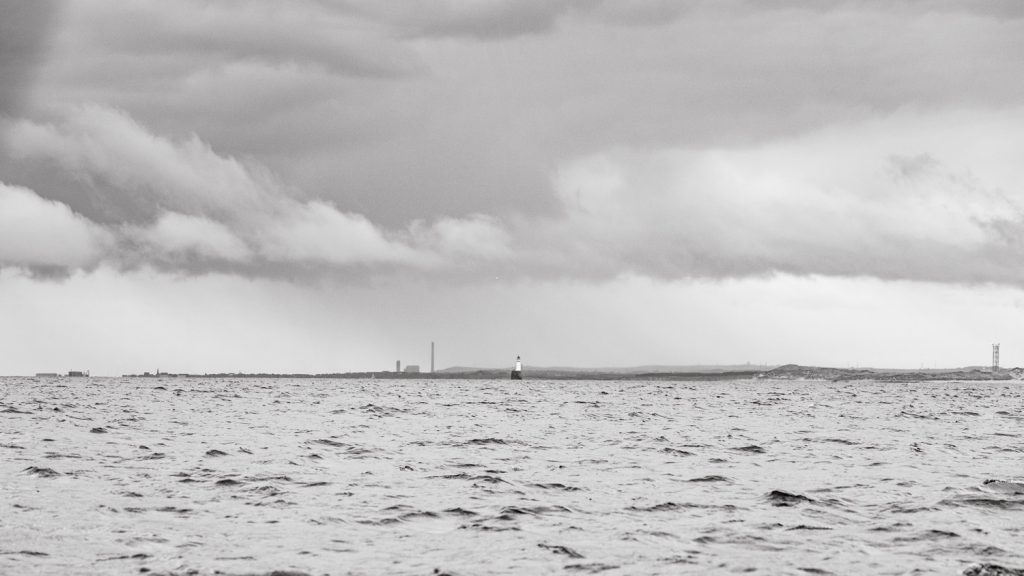
Dawn saw a blue blurry line of land rising out of the sea ahead of me, from the Bin of Cullen on the starboard hand to the as yet undefined point where the low lying Rattray Head tapered gently into the North Sea. The infrastructure for landing gas from the North Sea, much of which comes ashore just south of headland was a a much more certain daymark than the lighthouse which formally marks the eastern edge of Aberdeenshire.
Rattray Head light is a low light, built just offshore on a little shelf of rock, and I had ample opportunity to admire its construction for many hours, because the wind died as I approached it, and having made better speed than expected overnight Trilleen was early for the tide gate and pushing tide. For much of the next few hours a competitive toddler would have outpaced us, as I edged inshore into the shelf in search of a reduction in the tide, or better yet a back eddy.
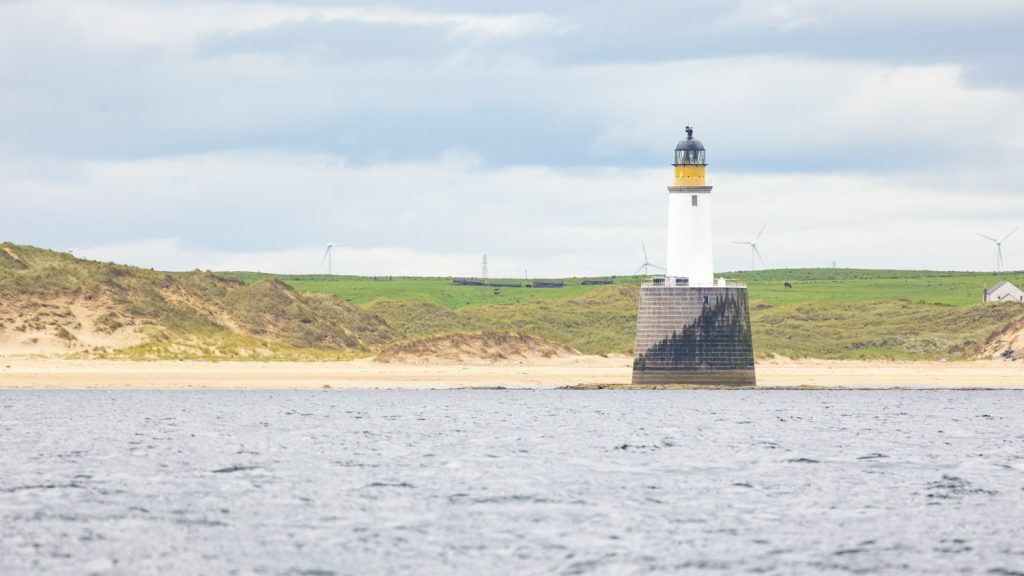
Eventually the tide released us from its grip, aided by the wind’s brief return, and after I negotiated speaking with Peterhead VTS, who communicate with a quiet informal efficiency in the dense dialect of the coastal Doric, we transited the curving arms of Peterhead’s breakwater, and reach the security of the marina here, scenically located under the walls of Peterhead prison. Just inshore of the marina is a swimming zone and the base of Peterhead sailing club and the Aberneenshire sailing trust. It was enormously encouraging for the future of the sport to see kids swimming, playing and sailing every kind of floating thing, and later in the evening to sea Sea Cadets training in Trinity class cutters and powerboats.
